Affiliate disclosure: This post may contain affiliate links. Please see our Privacy Policy.
Free Raised Beds may sound too good to be true, but if you have access to trees or logs on your land, they’re entirely possible—and surprisingly effective. We started using log raised beds on our Vermont homestead as a way to deal with shallow clay soil and heavy summer rains, and years later, we’re still amazed at how well they work.
Whether you’re gardening on a budget or just want to build with natural materials, this method is worth a try.
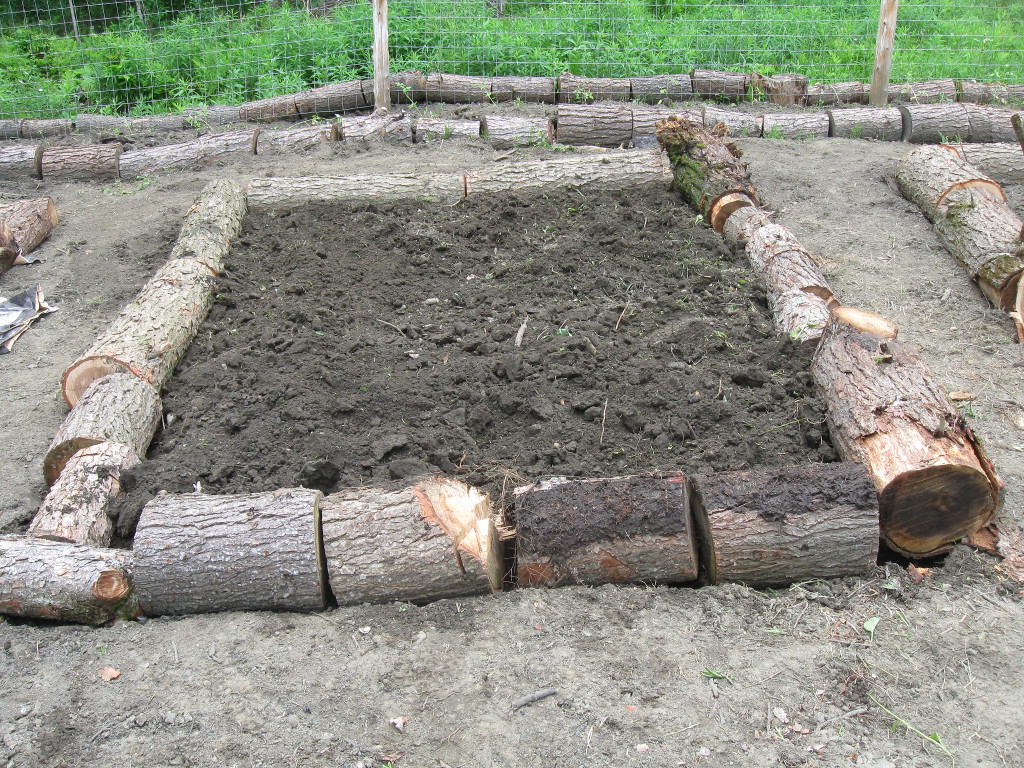
If you’re dealing with shallow soil or heavy rainfall, gardening in raised beds can be a total game-changer. But anyone who’s priced out cedar boards lately knows raised beds don’t come cheap—especially if you’re hoping to build more than one. The good news? Raised beds don’t have to be expensive. If you have access to woodland, log raised beds are a free and effective alternative.
We’ve been using log raised beds on our Vermont homestead for years now, and they’ve completely transformed our gardening experience. Not only are they cost-effective and sustainable, but they also work with your local ecosystem to improve the health of your garden soil naturally.
Whether you’re trying to garden on clay soil, cut costs, or just put those extra logs to use, building a raised bed from logs is a satisfying and practical DIY solution.
Why Build Raised Beds from Logs?
In Vermont, we get plenty of rain—especially during the early summer. Just last week, we had over four inches of rain in 48 hours, more than the average for the entire month of June. It’s not uncommon for our garden to sit under standing water for days after a storm.
Our soil is shallow, with just 10 to 18 inches of topsoil sitting on top of dense, impermeable clay. That means water doesn’t drain well. Flat spots flood. Sloped areas wash out. And unless our plants are literally raised above it all, they’re sitting in soggy soil every time it rains hard—which is often.
A few years back, we decided we needed a better solution than simply planting in mounded rows. We transitioned our vegetable garden to a no-till raised bed system, and the results have been dramatic.
The key?
We didn’t spend a fortune on materials. We made our own raised beds from logs harvested right on our land.
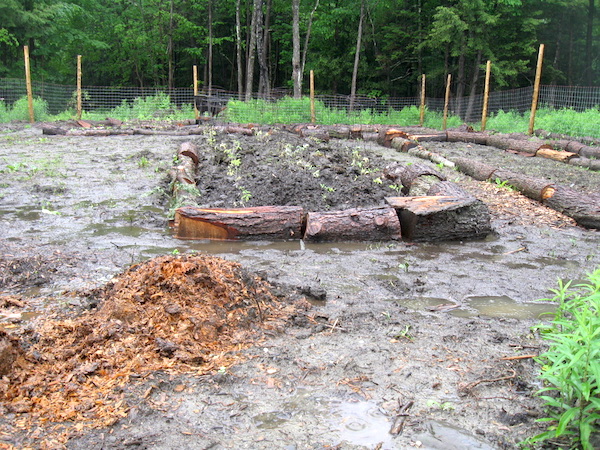
Cordwood Raised Beds: A Simple, Natural Choice
Log raised beds (sometimes called cordwood raised beds) are made using cut logs or poles instead of dimensional lumber. We chose softwood logs—mostly hemlock—because they were abundant on our land and not useful for much else.
Cedar boards are beautiful and long-lasting, but they come with a steep price tag. Pressure-treated lumber is more affordable and durable, but it’s not something we wanted near our vegetable beds due to chemical concerns. Cinder blocks are another option, but they’re heavy, expensive, and permanent.
Using logs felt like the perfect middle ground. They’re biodegradable, free, and easy to work with. Hemlock, in particular, doesn’t burn well due to low BTU output and creosote buildup, so it’s not ideal firewood—but it’s perfect for garden use.
We had to remove some trees anyway to open up more sun for gardening, and putting those logs to use in the garden made perfect sense.
How Log Beds Perform in Wet Soil
Within days of building our first log bed and planting it with tomato seedlings, we saw the difference. The surrounding garden had standing water for over a week, but the tomatoes in the raised bed didn’t seem to mind one bit. They thrived.
We’ve continued adding more log beds each year, and it’s made our garden more resilient during wet periods. Even in our soggiest years—like the one where the garden sat in 2 inches of water for most of June—the raised beds kept our crops above the worst of it.
Tomatillos might be able to survive anything (seriously, we once raked 12 quarts of fruit from a waist-high field of weeds), but most vegetables appreciate good drainage. Raised beds help provide that, and log-raised beds are an affordable, DIY-friendly way to get there.
How Long Do Log Raised Beds Last?
One of the biggest questions people ask is how long logs will last in the garden. Honestly, we expected to get 5 to 7 years out of our hemlock beds before they rotted away. But six years in, the very first beds we built for perennial crops are still holding up strong.
At this rate, I expect they’ll easily last 10 to 12 years—even with softwood. If you have access to hardwood logs, they’ll last even longer, but we prefer to save hardwoods for firewood and other uses.
And when they do finally start to break down? They enrich the soil with organic matter, creating healthier beds over time. Then we simply replace them with more hemlock from the woods.
How to Build a Log Raised Bed
Building a log raised bed is incredibly simple. Start by selecting logs that are roughly uniform in size. Leave them as large as you can reasonably carry—bigger logs last longer and hold shape better over time.
- Dig a shallow trench about the width of your log and half as deep. This helps the log sit securely and keeps it from rolling.
- Place the logs in the trench to form the sides of your bed.
- Backfill around the base of the logs with soil to stabilize them. The soil you removed while digging will help fill in the bed itself.
- If you have any already downed or partially rotted wood, use that. It’s a bonus for the soil, especially if fungi and mycelium are already established in the log.
Once the bed is built, you can begin filling it with soil, compost, and organic matter. It doesn’t need to be full right away. Many of ours started out about half-full and gradually built up over time.
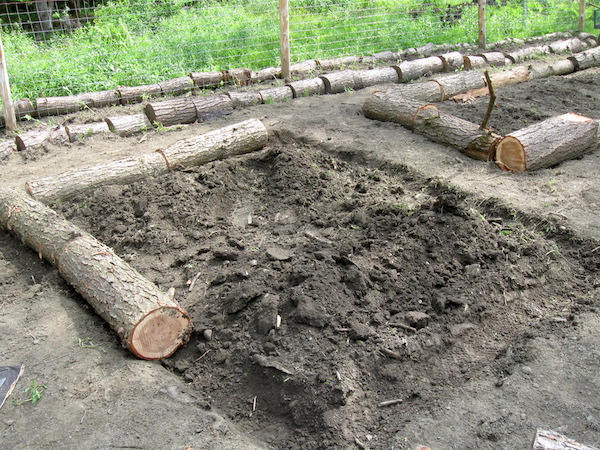
Smart Ways to Fill and Plant Log Beds
We use a progressive filling method to slowly build soil in new log beds. In the first year, we typically grow potatoes in our raised beds, which need to be hilled anyway. As we add soil throughout the season to support the growing potato plants, we’re also building up the depth of the bed.
After that first season, we often plant shallow-rooted crops like strawberries. They don’t mind the still-developing soil, and they help stabilize things while we continue improving the bed.
In some beds, we’ve added Winecap mushrooms (Stropharia rugosoannulata) to the mulch layers. These aggressive decomposers help break down straw and wood chips into rich, crumbly soil—perfect for future planting.
You’d be amazed how well companion planting strawberries with mushrooms boosts yields and helps develop soil in your new beds.
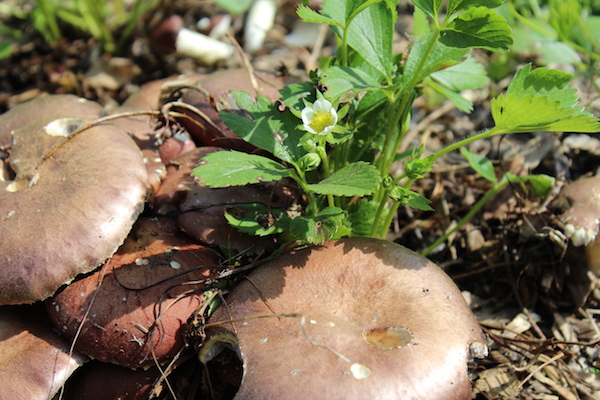
Growing garlic in raised beds works well too, but you’d be surprised how deep those roots grow. While garlic looks like a shallow rooted crop, once you’ve grown garlic you’ll see that the bulb stays shallow but the actual roots go down about 18 inches into the soil. We tried that in early years, but in the end, we had to wait until our beds were much deeper.
We also mulch our garden paths between beds using hemlock bark sheets (from the logs) covered with woodland leaves. Later, we started making our own bark mulch, but that’s a bit more involved than simply laying down sheets of bark.
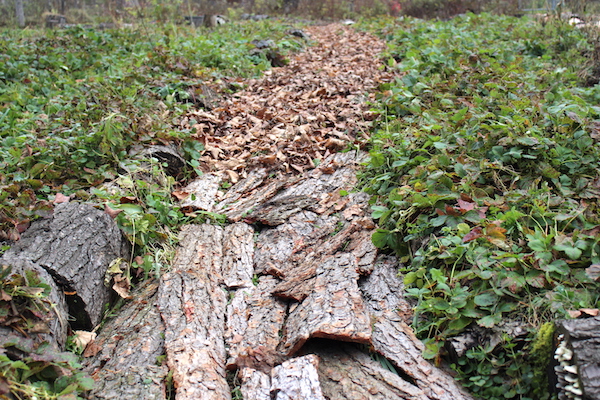
This not only keeps weeds down and paths walkable but also feeds the soil over time and retains moisture.
If you’re just mulching paths, gardening with wood chips can be an inexpensive option too, as they’re often a bit more available than bark mulch and they last longer.
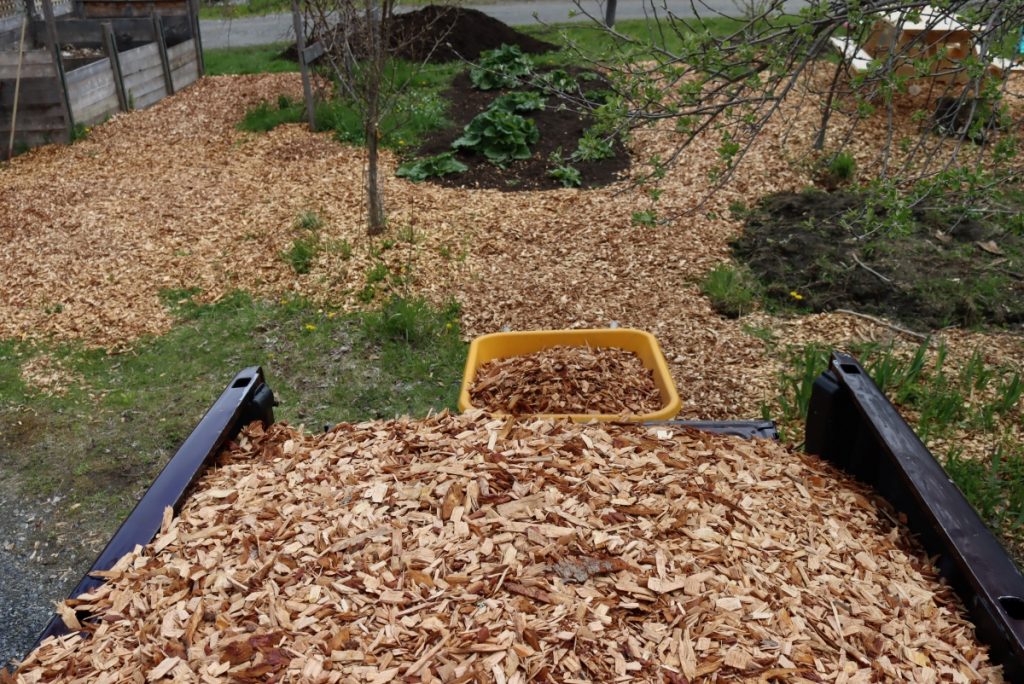
Log Beds and Soil Life
One of the unexpected benefits of log raised beds is how well they support soil biology. The wood acts as a sponge, slowly releasing moisture back into the soil. It also provides a habitat for beneficial fungi, which break down organic matter and improve soil fertility.
Unlike treated wood or synthetic borders, logs encourage a healthy soil ecosystem, much like hugelkultur beds. Over time, this can reduce the need for added fertilizer or amendments, as the soil becomes richer and more self-sustaining.
Though, of course, you’ll want to make plenty of compost to feed the beds, just like any garden.
A Perfect Solution for Wooded Homesteads
If you’re homesteading on wooded land, log raised beds are a simple, inexpensive option and they can really help you garden with marginal soils. They’re free, easy to build, and biodegradable. While they don’t last forever, they improve the soil as they break down—and replacing them is as simple as heading out with a chainsaw.
We’ve been thrilled with how our log beds have performed, especially in wet years, and we’ll keep building more as our garden expands. Whether you’re on a tight budget or just want to use natural materials, log raised beds are a smart, sustainable gardening choice.
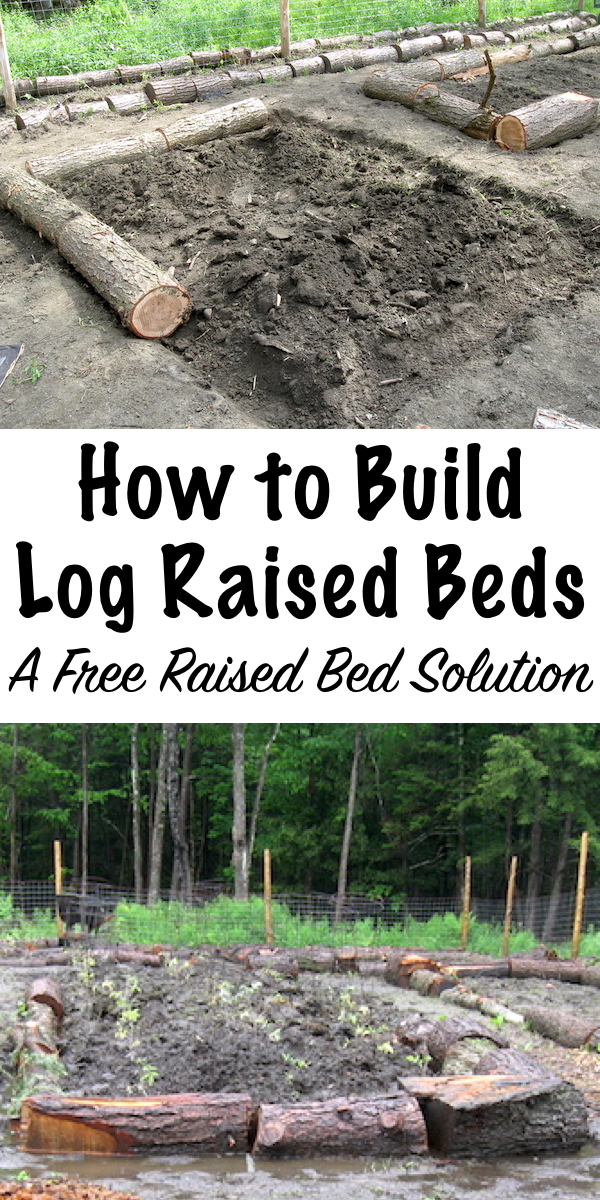
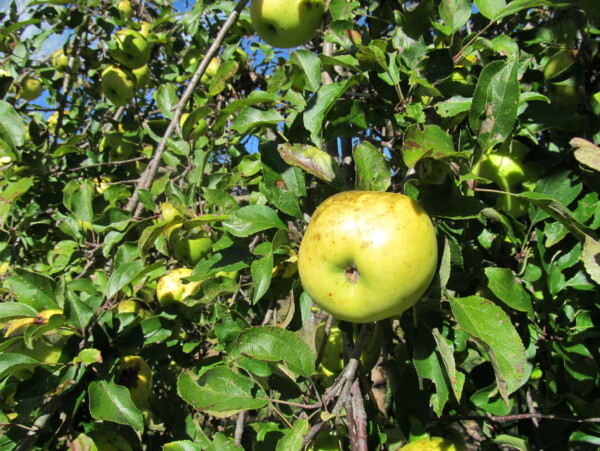



I’ve been thinking about this for a while. I have a mixed hardwood/softwood lot that’s also very rocky with some wetland areas. I am trying to choose what to do with all the twigs and branches on the ground without wasting. If I burn maybe the biochar would be good, or I could use a chipper or try the hugelkultur style raised bed. What is the most efficient use of this woodland resource? I need to cut some really tall pines for light, fortunately I have access to a portable sawmill. But there will be lots of branches to clean up. P.S. I love love this site and I read your postings as soon as I get them. Thank you so much
I think I would definitely pursue the hugelkultur beds.
Thanks for the article! I did this last year with pine logs and love it. Instead of laying logs flat I stood them up. This allows me someplace to sit while I weed and made my bed deeper.
I’ve used this too to shore up soil in a bed on a hill and am trying it now to make a small tiered bed on a hill.
I really enjoy putting the logs to work this way instead of stacking them or hauling them off.
Elizabeth
That’s a great idea. Thanks for sharing.
This is really awesome. I read this after seeing the garden that I am currently using as a border and realized how this was free and way better than the garden that I spent $200 on and needs to be replaced after 3 years. I am going to look for more logs right now and just replace the other 3 with large logs. Super excited and inspired
thanks!!!!!! I’ve thought of this but haven’t really seen it in action .
warmest regards Jennie
Thanks Ashley for this article and many others that we have benefited from. We built six log raised beds last year, filled the inside with smaller diameter brush and covered with manure & extra dirt we had – Hugelkultur style you might say – then mulched them well. They have worked out better than expected. A great option for poor soil conditions or excess moisture.
What about the grubs I see under the bark of drying trees?
If there are grubs in a dying tree, that’s what they’re eating (not your veggies). They’ll likely keep eating it, helping it decompose and releasing nutrients into the soil. I wouldn’t worry about bugs in the tree harming your crops (unless you’re growing trees in the raised beds…)